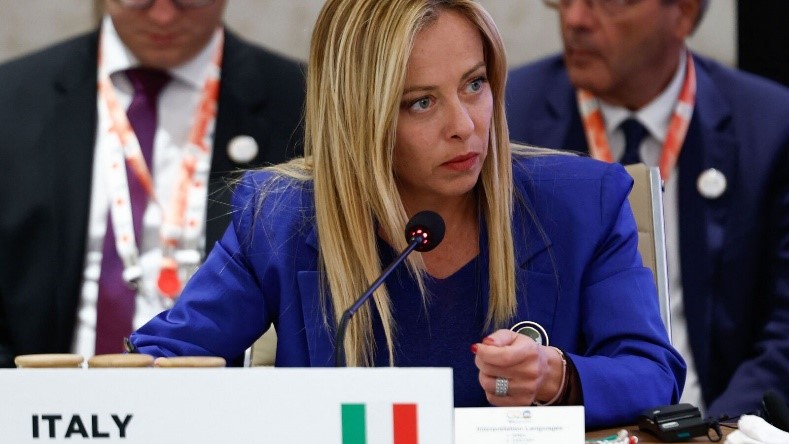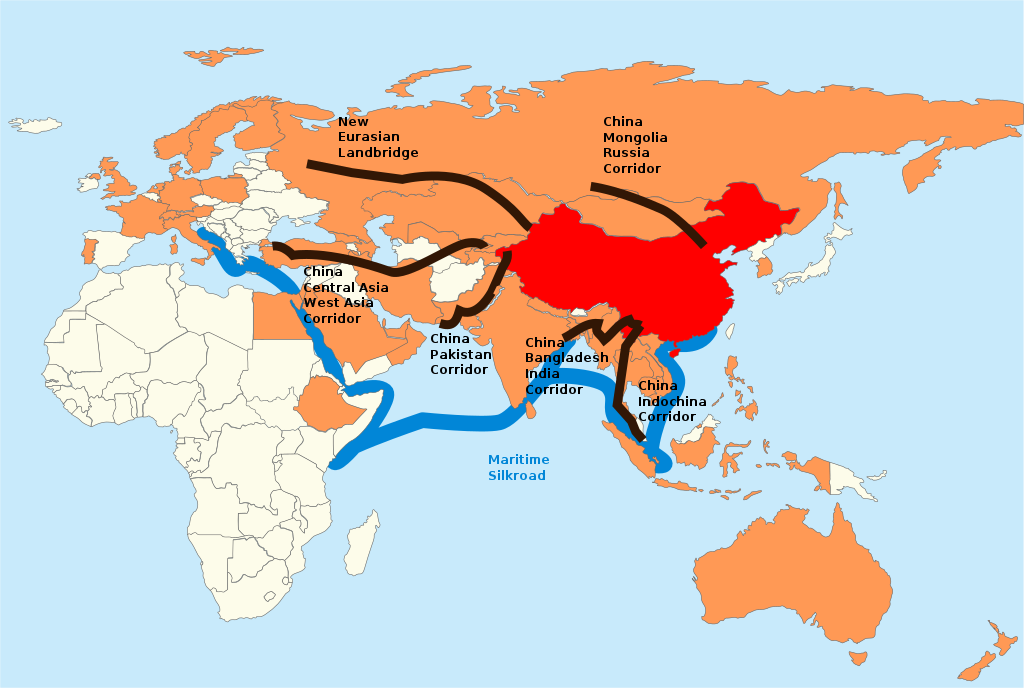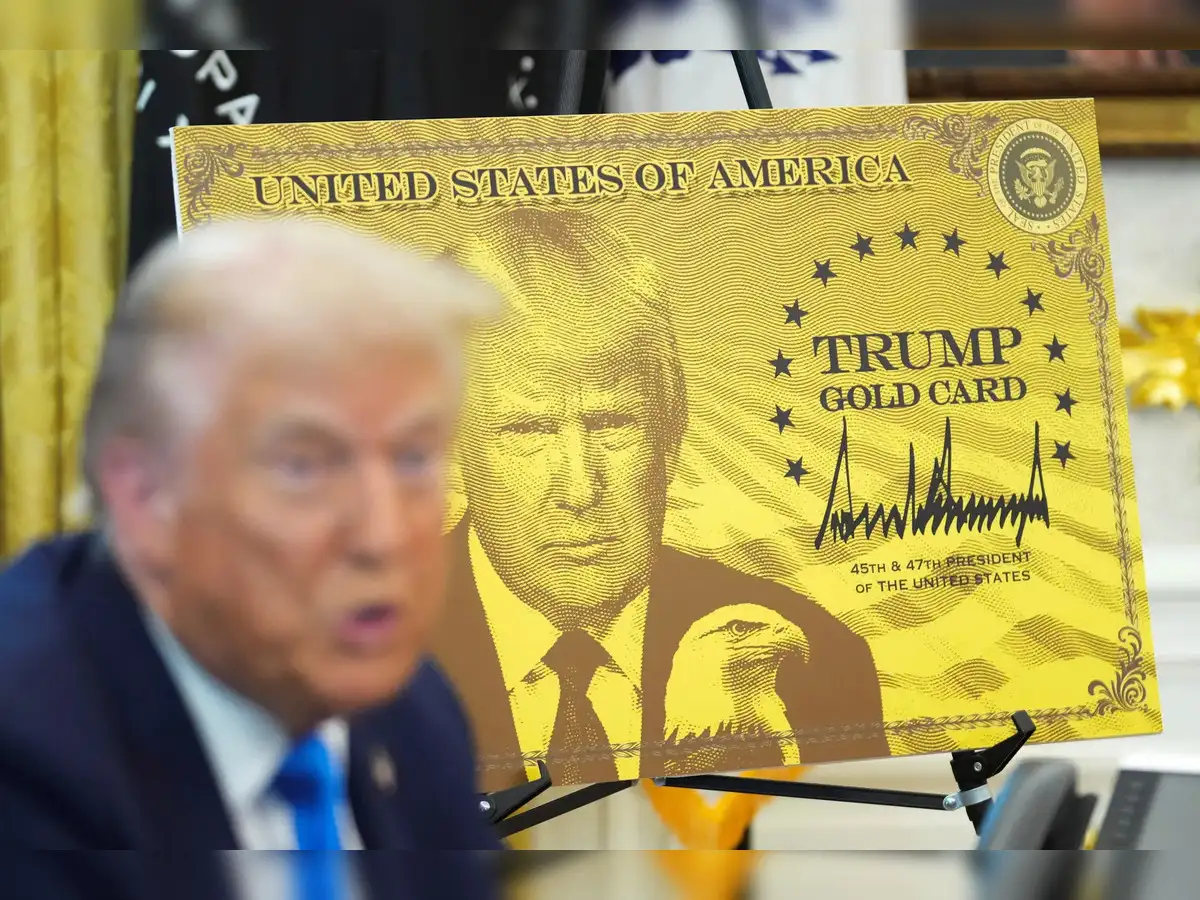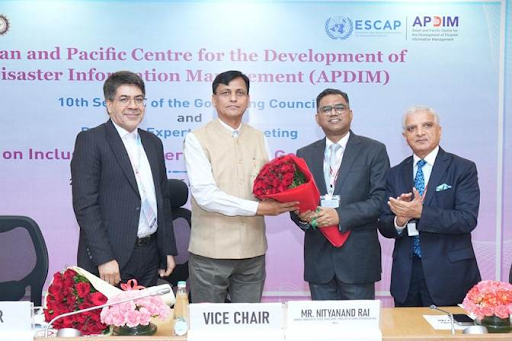Description

Disclaimer: Copyright infringement not intended.
Context
- Italy is planning to leave China’s Belt and Road Initiative (BRI).
READ ABOUT BRI:
https://www.iasgyan.in/daily-current-affairs/belt-and-road-initiative
https://www.iasgyan.in/daily-current-affairs/indias-stand-on-bri
Why does Italy want to leave the BRI?
- Italy had joined the BRI at a time it was desperate for investment and infrastructure building, having survived three recessions in 10 years. Its government at the time did not share warm relations with the EU, and was happy to turn to China for the funds it could pump in.
- Four years later, the agreement hasn’t done much for Italy.
- According to figures from Council on Foreign Relations, Chinese FDI in Italy dropped from $650 million in 2019 to just $33 million in 2021. In fact, the country invested far more in non-BRI countries in Europe.
- In terms of trade, since joining BRI, Italy’s exports to China increased from 14.5 billion euros to a mere 18.5 billion euros, while Chinese exports to Italy expanded from 33.5 billion euros to 50.9 billion euros.
- For China, a G7 country joining the BRI had been a big diplomatic win, and Rome walking out just ahead of the initiative’s 10th anniversary will be a loss of face. This will be in line with Europe’s increasingly cautious stand towards China.
- Many countries in Europe continued to maintain close economic and trade links with the Asian economic giant. The Russia-Ukraine war, China’s perceived staunch support of Russia, and geopolitical rivalries taking the form of trade sanctions have forced a rethink.
- Recently, the EU-China Comprehensive Agreement on Investment (CAI) collapsed.
- Last year, Estonia and Latvia quit the 17+1, China’s diplomatic push in Central and Eastern European countries. Lithuania had walked out in 2021.
- Italy too has been gradually hardening its stance against Beijing.
- Italy has the G7 presidency next year, and walking out of the BRI will sit well with its Western allies.
- The BRI, too, has attracted negative press over the years. Many countries that joined it enthusiastically now find themselves staring at a massive debt burden to China.
- An analysis by the Associated Press “of a dozen countries most indebted to China — including Pakistan, Kenya, Zambia, Laos and Mongolia” found that paying back the debt “is consuming an ever-greater amount of the tax revenue…and draining foreign currency reserves.
- Behind this, is China’s reluctance to forgive debt and its extreme secrecy about how much money it has loaned and on what terms, which has kept other major lenders from stepping in to help.”
- Recently, the West has come out with its own initiative for funding infrastructure projects across the world, seen as a counter to the BRI —the Partnership for Global Infrastructure Investment (PGII).
Read about PGII: https://www.iasgyan.in/daily-current-affairs/india-middle-east-europe-mega-economic-corridor#:~:text=What%20is%20the%20Partnership%20for,the%20European%20Union%20(EU).

Belt and Road Initiative (BRI)
- The Belt and Road Initiative (BRI) is a large-scale infrastructure development programme launched by China in 2013.
- The initiative aims to connect Asia with Europe and Africa, through a network of railways, highways, ports, airports, and other infrastructure projects with the intent to promote trade, investment, and economic growth in participating countries. Hence, this has been described by Chinese officials as a "new model of globalisation" that benefits all parties involved.
- The BRI comprises two main components: The Silk Road Economic Belt and the 21st century Maritime Silk Road. The Silk Road Economic Belt focuses on improving connectivity and cooperation between China and countries in Central Asia, Europe, and West Asia, while the 21st century Maritime Silk Road focuses on strengthening maritime cooperation between China and countries in Southeast Asia, South Asia, and Africa.
BRI and India
- India does not support the BRI, and has declined to join the project. The major reason for this is that the BRI passes through Indian territory illegally held by Pakistan.

- The arm of the BRI project that links mainland China to the Arabian Sea runs from Kashgar in China’s Xinjiang Uighur Autonomous Region to Gwadar port in southwestern Baluchistan in Pakistan.
- The project enters Indian territory occupied by Pakistan in Gilgit Baltistan, and traverses the entire length of Pakistan from north to south before reaching the Arabian Sea.
- This arm of the BRI is called the China-Pakistan Economic Corridor, or CPEC, and consists of multiple modern highway and railway projects.
- India has repeatedly voiced its concern and opposition to the CPEC, and flagged the violation of international law in its building by China and Pakistan.
The position of the Indian government can be summarised as follows:
- The Indian Government firmly believes that connectivity initiatives must be based on the universally recognized international norms, good governance, rule of law, openness, transparency, and equality, and must be pursued in a manner that respects sovereignty and territorial integrity.
- India is of the opinion that the inclusion of the so-called CPEC which passes through parts of the Indian state of Jammu & Kashmir under illegal occupation of Pakistanas a flagship project of BRI, reflects lack of appreciation of India’s concerns on the issue of sovereignty and territorial integrity.
- Earlier, in 2015, the then Indian Foreign Secretary S. Jaishankarhad categorically stated that, as far as India is concerned, BRI is a Chinese national initiative. The Chinese devised it, created a blueprint and it has been devised with Chinese national interests in mind.
- In the background of growing debate on BRI, and India’s own plans of regional connectivity, the 2016 Raisina Dialoguehad focussed on Asian connectivity. Although government officials did not mention BRI, it was clear what was being discussed. At the dialogue, the then Indian External Affairs Minister late Sushma Swaraj had underlined the importance of cooperative rather than unilateral approach to connectivity. She had underlined the need for creating an environment of trust and confidence, as a prerequisite for a more interconnected world.
- The same position was repeated in 2018when India participated for the first time as a full member of SCO (Shanghai Cooperation Organisation). It was then expected that India might soften its stand on BRI. On the contrary, India was the only member country that did not endorse the BRI project. At the summit, Prime Minister Modi asserted that India welcomes new connectivity projects that are inclusive, sustainable, and transparent and respect countries’ sovereignty and territorial integrity.
- In the Joint Declaration of the recently held SCOalso India did not support BRI, ostensibly as it violates India’s sovereignty and territorial integrity as the CPEC passes through POK.
Real Intention of China behind BRI in view of the Experts
- Despite its branding as an economic and development initiative, according to experts BRI is in fact the embodiment of efforts of the Chinese government to develop close coordination between military struggle and political, diplomatic, economic, cultural, and legal endeavours to foster a strategic environment conducive to China’s rise.Integrating the civilian and military sectors is a pillar of China’s defence policy strategic framework, believe experts.
- Sensing this, in the Joint Declaration of the Council of Heads of State of SCO hosted by India recently, India did not support China’s Belt and Road Initiative, ostensibly as it violates India’s sovereignty and territorial integrity, as the China-Pakistan Economic Corridor passes through POK.

The Fall of BRI
- China’s ascent as an international financier (especially in low-income countries) has been accompanied by claims that it engages in so-called debt-trap diplomacy.
- The term originated in 2017 to describe a deal that saw Beijing receive a 99-year lease for the Hambantota Port in Sri Lanka after the country fell behind on debt payments and has since been more widely applied to any Chinese project that conflicts with Western interests, especially those under the Belt and Road Initiative (BRI).
- China is using the BRI to exert undue influence over the world, especially because the initiative mostly funds infrastructure rather than the social sector projects, such as health or education initiatives, that are often favored by large multilateral donors and Western nations.
- Critics worry that China will be able to seize control of these assets for military use or use them as leverage in future negotiations.
- The real reason why the BRI has struggled to sustain itself is due to debt traps or predatory lending, as well as poor risk management and a lack of attention to detail and cohesion from the Chinese state-owned enterprises and banks, private companies, and local governments involved.
- The initiative has also faced several challenges, including concerns about debt sustainability and the impact of China's economic slowdown.
- The Chinese economy has experienced a slowdown in recent years, with declining growth rates and mounting debt levels, which has raised questions about the sustainability of the BRI, and the ability of China to continue investing in large-scale infrastructure projects.
- The economic slowdown has led to increased scrutiny of China's overseas investments, including those under the BRI, which has affected the pace of BRI projects. Some projects have been delayed or put on hold, and China has become more cautious about taking on new investments.
- Critics have raised concerns about not just the financial sustainability of the projects, but also the social and environmental impact of the infrastructure projects. This has made it more difficult for China to gain the support and cooperation of host countries, which is crucial for the success of the BRI.
- Looking ahead, the impact of China's economic slowdown on the BRI will depend on several factors, including the pace of China's economic recovery, the level of debt sustainability of BRI projects, and the geopolitical context in which the initiative operates.
- One of the most significant criticisms of the BRI is that it is a debt trap, which involves China lending money to developing countries for infrastructure projects that they cannot afford to repay. Critics argue that this leads to countries becoming trapped in a cycle of debt and dependence on China, which can undermine their sovereignty and increase their vulnerability to economic and political pressure from China.
Examples of countries facing Debt issues
- There are several examples of countries that have experienced debt issues as a result of BRI projects. Sri Lanka, for example, was unable to repay its debt for the Hambantota Port project and was forced to hand over control of the port to China on a 99-year lease. Djibouti's struggle to repay Chinese loans has also generated criticism on the Chinese model of project financing for creating debt traps for developing countries. Pakistan's debt to China has also been growing, with concerns raised about the financial sustainability of the projects and their impact on Pakistan's economy with China investing billions of dollars in infrastructure projects under the China-Pakistan Economic Corridor (CPEC), a key component of the BRI. China has invested heavily in infrastructure projects in Laos, however, the project has been criticised for its high cost and potential impact on the environment, and concerns have been raised about Laos' ability to repay the loans from China. These are just a few of many such cases.
|
PRACTICE QUESTION
Q. Despite its branding as an economic and development initiative Belt and Road Initiative (BRI) is in fact the embodiment of efforts of the Chinese government to develop close coordination between military struggle and political, diplomatic, economic, cultural, and legal endeavors to foster a strategic environment conducive to China’s rise. Examine.
|
https://indianexpress.com/article/explained/explained-global/italy-china-belt-and-road-initiative-explained-8933654/













